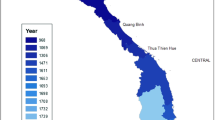Abstract
The survival of endangered languages in complex language competition depends on the socio-cultural status and honour endowed (by itself and by the other) among them. The restriction in the endorsement of this honour leads to the extinction of one language and rise of the other. Endorsing proper mutual honour to each other triggers the co-existence of people speaking the two languages and this can save both languages from extinction. The loss of respect to each other leads to the death of both languages. We found a minimal or critical mutual honour \(u_c\) which protects the two languages from extinction. The increase in mutual honour from this minimal value allows an increase in the populations of the people who speak the two languages. The state of co-existence of competing languages abolishes the concept of minority and majority in language competition, which can be obtained by mutual honour. Further, excess of biased honour to a particular language (minority or majority) forces the language to extinct. In mean-field approximation of language competition, magnetisation parameter can be taken as an indicator of the survival of a language.




Similar content being viewed by others
References
J A Fishman, Reversing language shift: Theoretical and empirical foundations of assistance to threatened languages (Multilingual matters) (Clevedon, Philadelphia, 1991)
J W Minett, S-Y William and WS-Y Wang, Lingua 118, 19-45 (2008)
D M Abrams and S H Strogatz, Nature 424, 900 (2003)
M S Miguel, V Eguiluz, R Toral and K Klemm, Comput. Sci. Eng. 7, 67 (2005)
W S-Y Wang and J W Minett, Trends Ecol. Evol. 20, 263 (2005)
J Mira and A Paredes, Europhys. Lett. 69, 1031 (2005)
J Pinasco and L Romanelli, Physica A 361, 355 (2006)
T Gong, L Shuai and M Zhang, Phys. Life Rev. 11, 280 (2014)
X Castell, L Loureiro-Porto, V M Eguiluz and M S Miguel, Advancing social simulation (The First World Congress, 2007) pp. 83–94
W H Press, S A Teukolsky, W T Vetterling and B P Flannery, Numerical recipe in Fortran (Cambridge University Press, 1992), ISBN: 9780521430647
Acknowledgements
RKBS would like to thank the Special Centre for Study of North-East India, Jawaharlal Nehru University for inviting him to present this work and for exciting discussions.
Author information
Authors and Affiliations
Corresponding author
Rights and permissions
About this article
Cite this article
Singh, M.S., Singh, R.K.B. Evolution of language driven by social dynamics. Pramana - J Phys 97, 105 (2023). https://doi.org/10.1007/s12043-023-02584-3
Received:
Revised:
Accepted:
Published:
DOI: https://doi.org/10.1007/s12043-023-02584-3




